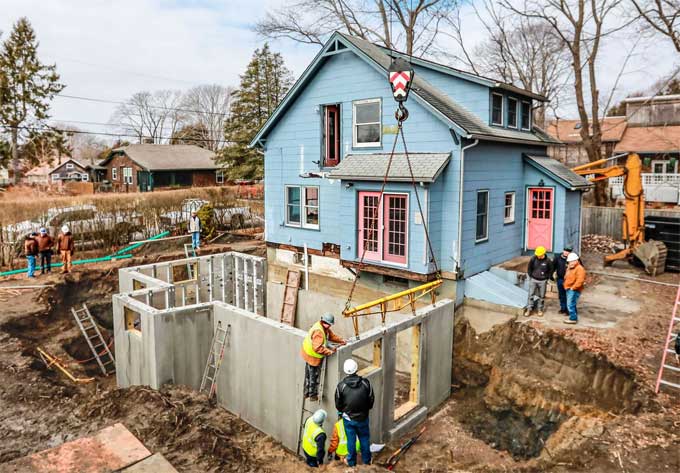
Types of Basement Foundations that every builder must know
Choosing the right type of foundation for a building or home depends on many factors, such as the soil, climate, and even the homeowner's storage preferences. A foundation is usually partially underground so that its footings can be secured in the soil. Basements, however, require a further step or a deeper step.
What do you mean by basement foundation?
In addition to distributing a building's weight evenly, basement foundations secure the structure into the ground and keep moisture from getting into the building.
There is one major difference between standard foundation walls and basement walls: standard foundation walls lie partially underground and do not provide livable space below the first floor. An underground floor can be built by submerging the foundation walls as well, which allows a basement to be built.
Compared to standard foundations, basement foundations take a longer time to construct. To dig and reposition soil, heavy machineries such as excavators, rollers, cranes, forklifts, and other heavy machinery is often required. The small rocks that block the path sometimes need to be broken up with drills and specialized hammers in order to be removed.
Basement foundation walls and standard foundation walls differ only in depth. There are three types of concrete slabs: precast, block, and poured concrete.
Different Varieties of basement foundations
Based on topography and personal preferences, basement foundations come in a variety of types. They are as follows:
Full basement foundations
A fully submerged basement floor covers the entirety of the building's perimeter and is defined by full basement foundations. Basements can either be finished or unfinished, with a finished basement having drywall and flooring installed to provide living and storage space. Walls and floors of unfinished basements are usually bare and uninsulated.
There are no windows in full basements, and if they do exist, they will be small and appear at ground level. The most expensive foundations are also more prone to mould and moisture than others.
Basement foundations for daylight
There are two sides to a daylight basement, with one fully submerged and the other above ground if the building is on a slope. A daylight basement is an ideal choice for homeowners who want a patio or a basement-accessible entrance, also known as a walkout basement. In addition to letting in some natural light, daylight basements are less susceptible to mould and humidity.
Crawl space foundations
When choosing a foundation, crawl spaces should be considered even though they are technically not a basement. The foundation of a crawl space is usually elevated several feet from the footings, leaving a small space between the ground and the building foundation usually three or four feet.
A crawl space is a happy medium between the basement and standard foundations as the walls are partially underground and shorter. Their depth is greater than that of standard foundations and their depth is greater than that of basements.
What are some advantages of basement foundations?
- It is very efficient in energy - A basement that is insulated uses less energy to heat or cool because it is not exposed to the elements. If you have a basement foundation you can save money and it also helps in the betterment of the environment.
- It provides shelter - When it comes to tornadoes or hurricanes, you should stay as close to the ground as possible. The basement can provide a secure environment.
- Helps in boosting the overall value of the foundation - The basement can serve as additional living and storage space without altering the appearance of the building.
What are some disadvantages of basement foundations?
- It is more expensive - A basement requires more excavation than a standard foundation, which can prolong construction time and increase costs.
- Lacks natural sunlight - Some homeowners are deterred from building basement foundations because they lack natural light. This is especially important if the basement will be heavily trafficked. Basements, however, come with a number of lighting options, so getting creative with lighting is one of the downsides.
- There are risks associated with mould and moisture - A basement may experience more water exposure than a standard foundation, depending on the climate. In order to keep the foundation crack-free and prevent moisture from getting inside, you should install a sump pump to insulate water pipes during floods.
To get more details, watch the following video tutorial.
Video Source: Civil Engineering Global


